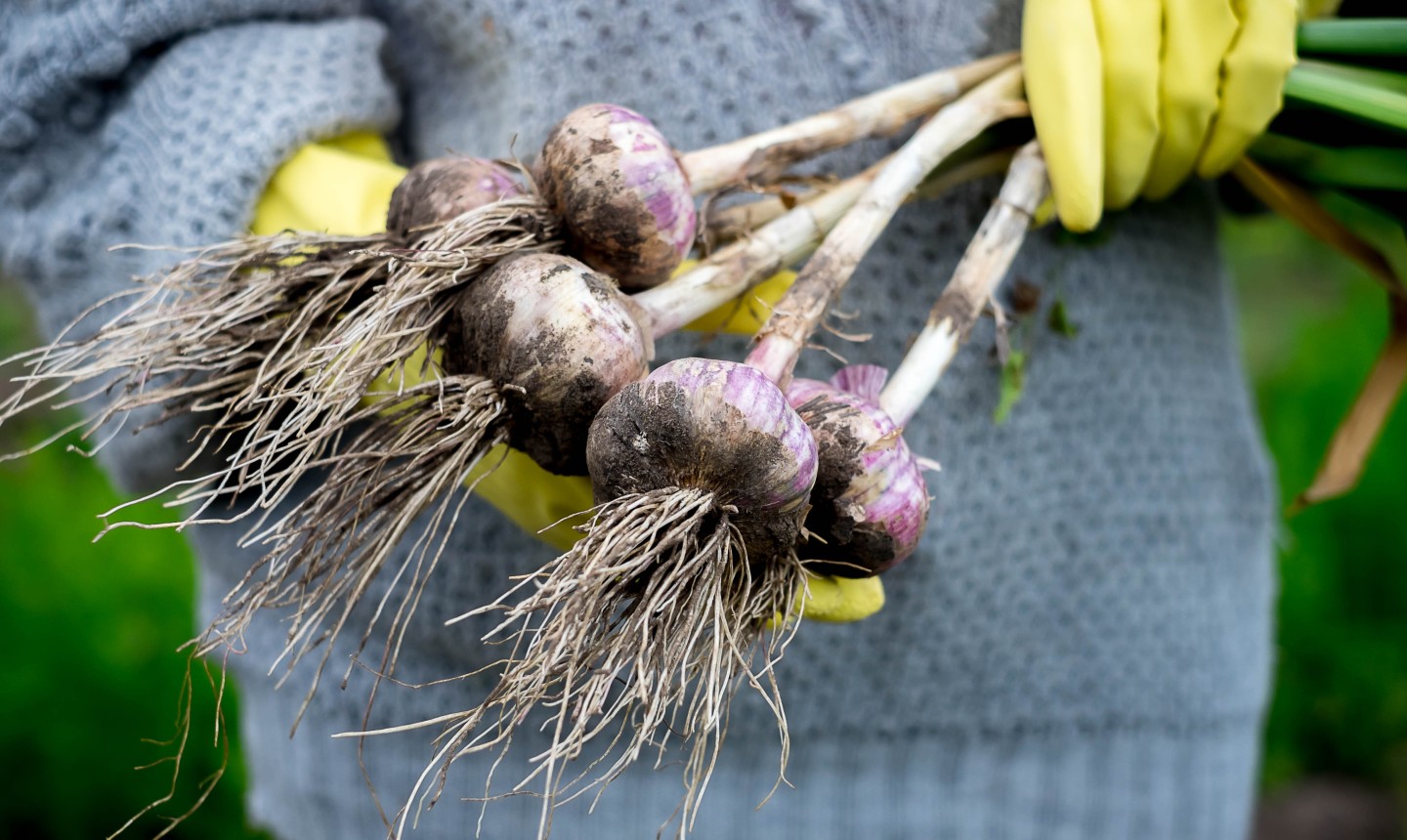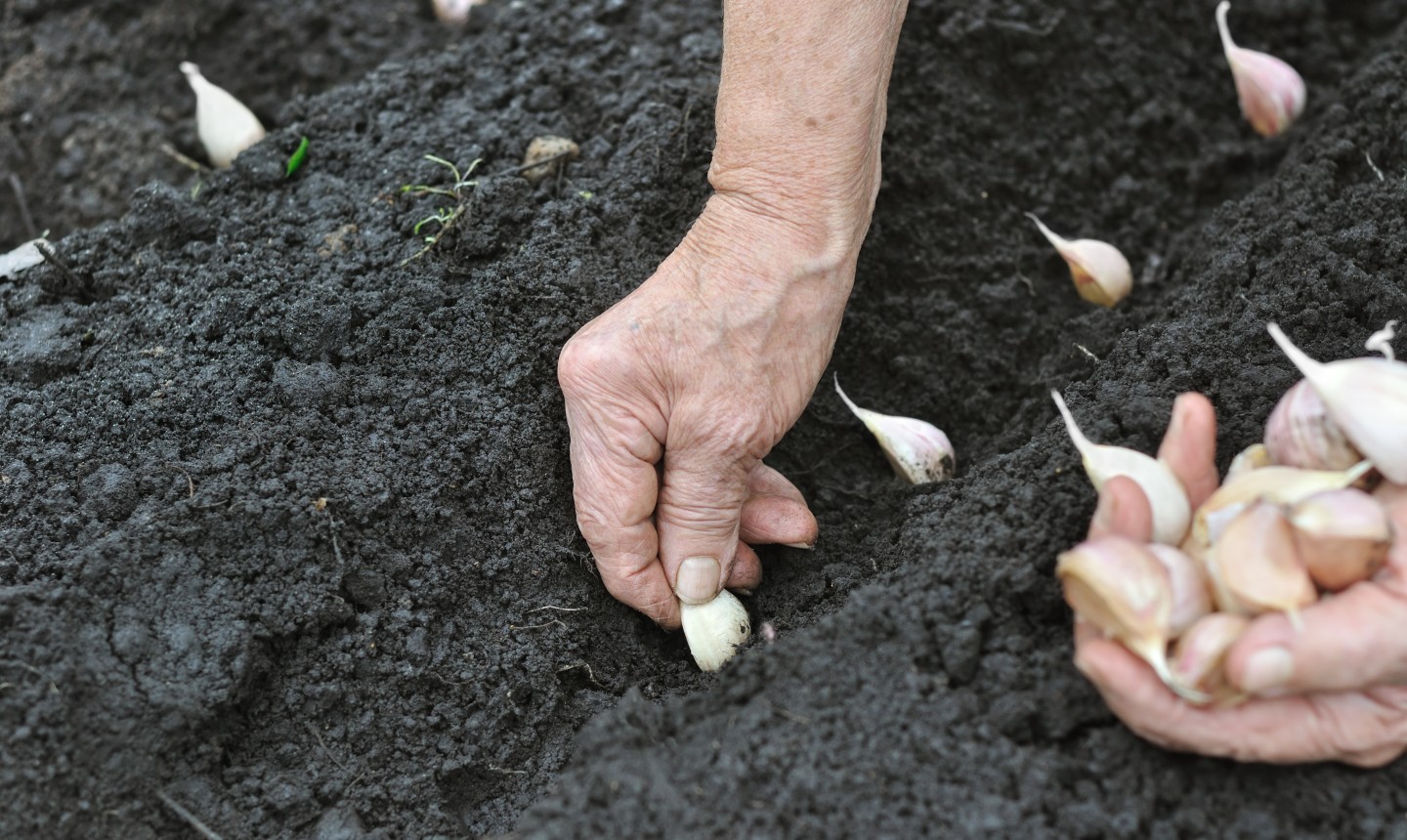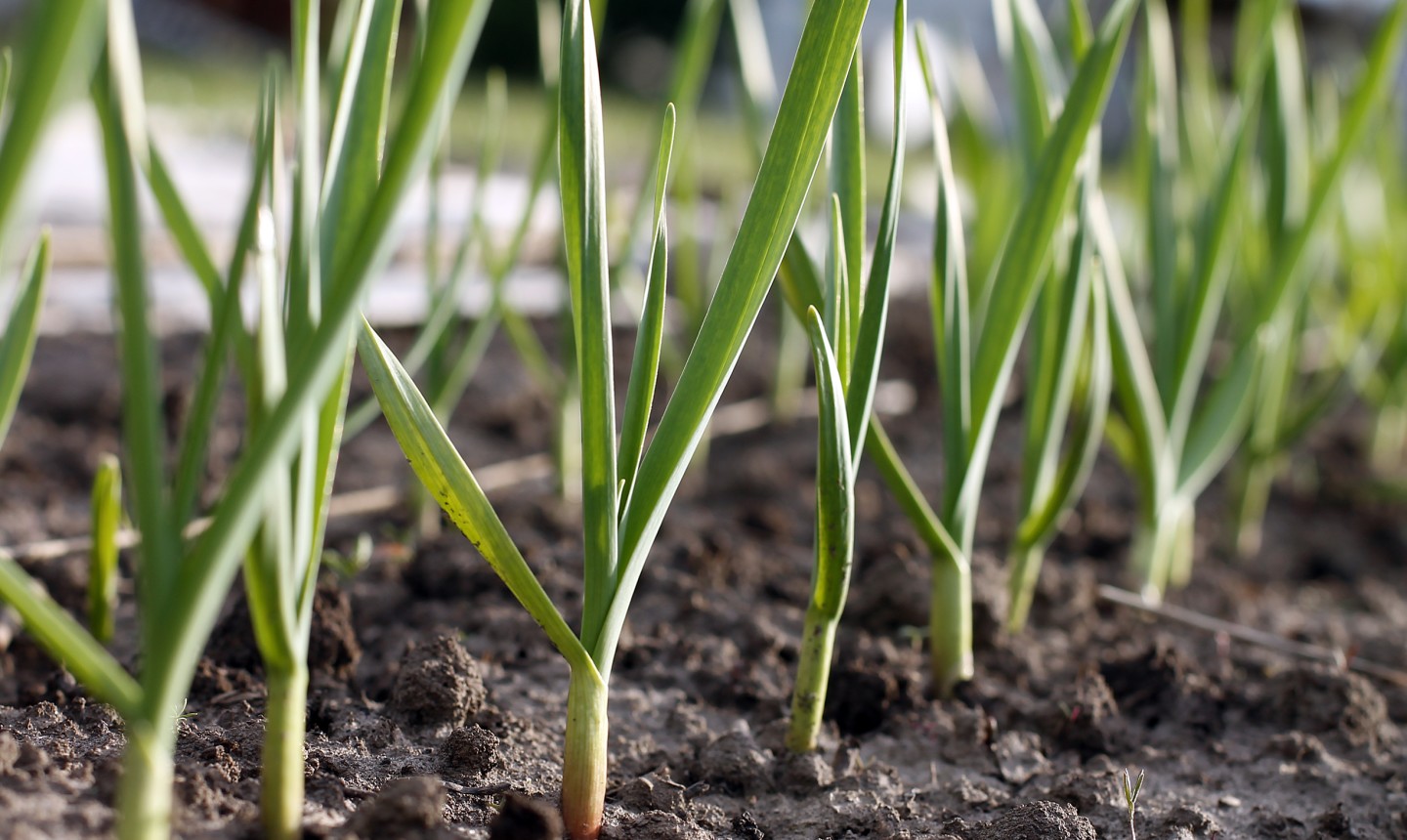 Every gardener knows spring is the busy season for planting, but only a handful of gardeners know the benefits of fall gardening. If you’re willing to wait patiently for a little magic to happen over the winter, you’ll be rewarded with huge harvests in the summer. One of the fall season’s easiest veggies to grow? Garlic! This savory root vegetable is one of the most delicious ingredients you can have in your kitchen and even provides a number of health benefits!
Every gardener knows spring is the busy season for planting, but only a handful of gardeners know the benefits of fall gardening. If you’re willing to wait patiently for a little magic to happen over the winter, you’ll be rewarded with huge harvests in the summer. One of the fall season’s easiest veggies to grow? Garlic! This savory root vegetable is one of the most delicious ingredients you can have in your kitchen and even provides a number of health benefits!
Planting this crop in the fall produces bigger bulbs, and some gardeners even swear it tastes better than those started in spring. Ideally, you want to plant them just after the first frost, but really anytime between mid-September and the end of October should work. And if you can, put the garlic in your raised-bed garden. It is highly resistant to fungal problems and can actually help protect your other crops, acting as a natural pest-deterrent, prepping you for a thriving summer harvest.
How to Plant Your Garlic
Good to Know: While you can grow garlic from bulbs purchased at the grocery store, it likely won’t grow as well as those sold at your local garden center. Garlic bought at the store is often shipped across the country (or across the world), meaning it’s designed to grow in a climate much different than your own.1. Plant in Rich, Loamy Soil
We know what you’re thinking: soil is soil, right? Not exactly. Soil vastly differs from region to region, and different plants have different soil needs. For example: the dry, sandy soil succulents crave won’t support garlic, and vice versa. Garlic grows best in nutrient-rich soil mixed with compost, aged manure or fertilizer.2. Till Your Garden
Before planting, it’s important to till your garden so the soil mixes with organic matter, removes weeds and breaks up any large chunks of soil or rocks in your bed. You only need to sift the topsoil (so less than 12″ deep) and it’ll be prime for planting.3. Break the Cloves
 Planting garlic is totally hassle-free — the only tool you need is a spade , and if you don’t have one of those, you can even just use your hands. Simply break the garlic cloves away from the bulb (leaving the skin on) and plant each one pointy side up. The cloves should be planted 2″ deep and 6″ apart to give each plenty of room to grow.
Planting garlic is totally hassle-free — the only tool you need is a spade , and if you don’t have one of those, you can even just use your hands. Simply break the garlic cloves away from the bulb (leaving the skin on) and plant each one pointy side up. The cloves should be planted 2″ deep and 6″ apart to give each plenty of room to grow.
4. Prep for Overwintering
It’s important to protect your garlic (and any other crops planted in the fall) from harsh winter elements. Water the bed well, then cover the garlic with 6″ of mulch for overwintering. In a few weeks, you might see shoots poking out of the mulch, but this will stop as the weather gets colder.5. Come Back in the Spring
 In the spring, remove the mulch you added for overwintering. The shoots will re-appear and the bulbs will continue to develop until early or mid-summer. You’ll know they’re ready to harvest after the outer layer of the shoots has died back.
In the spring, remove the mulch you added for overwintering. The shoots will re-appear and the bulbs will continue to develop until early or mid-summer. You’ll know they’re ready to harvest after the outer layer of the shoots has died back.

What mulch is used for overwintering?
I've never planted garlic before, but I've had many very LARGE gardens with every kind of vegetable you can imagine. I wish I could get information on gardening like this on other subject matters. Thank you so much for providing a detailed description of the process.
My daughter made growing garlic her science project when she was a very young girl. It is easy to grow and almost guaranteed to do so!
Is it okay to plant in above ground planters
I live in Athens Greece and have planted many cloves of garlic in planters on my porch. They started coming up well, had some green leaves and then died. So I never had any past this stage. Ideas?
Great…thank you.
I wish gardening advice would include information about living in Southern California. To wait until "after the first frost" for instance, would mean that I would never be able to plant anything. Where I live, the winter temperature rarely goes below 33 degrees for YEARS. A cold day at my house is 40 degrees. No frost insight!
Where can I purchase the garlic?
Looking for this type of article constantly. Great details in article!
Plant healthy organic. Water garden not lawn ;-)